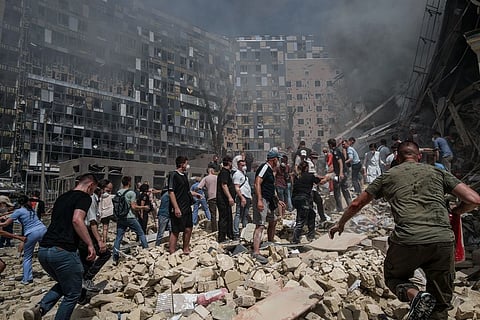

Ukraine, invaded by Vladimir Putin’s Russia on February 24, 2022, will see a 21 to 31 per cent decline in its population by 2052 because of the war and resulting displacement, European demographers have forecasted.
Researchers from the Austrian Academy of Sciences, IIASA, and the University of Vienna developed four hypothetical scenarios with different assumptions about the extent of the refugee movement caused by the war, return migration in the context of future recovery and reconstruction, and a set of longer-term migration trends.
The beleaguered country’s population will decline in all four scenarios. The most pessimistic one foresees a long war and a low number of Ukrainian nationals returning afterwards. Under this scenario, the population is projected to decline by 31 per cent by 2052, from 43.3 million in early 2022 to 29.9 million in 2052.
Even if Ukraine recovers quickly and experiences more inward than outward migration, which according to the demographers is the most optimistic scenario and outlook, the country will still decline as the population will decrease by 21per cent (to 34.3 million in 2052).
According to the demographers, Ukrainians under 20 years of age are projected to decline by 35 per cent in the most optimistic scenario, and by 43 per cent in the most pessimistic one between 2022 and 2052.
Ukrainian migration west to European countries is the biggest since 2015. That year, large numbers of refugees from West Asia and Africa, especially Syria and Afghanistan, came to Europe.
Most Ukrainians who have fled the country since Russian troops marched in are women — mothers and grandmothers — with children, according to data on net in-migration of Ukrainians into European countries in 2022.
Ukrainian men make up only a quarter of the adult refugees hosted in Europe.
According to the United Nations High Commissioner for Refugees, 5.1 million were displaced within Ukraine in June 2023. Another 5.9 million had fled to other countries, mainly in Europe.
The countries hosting the largest Ukrainian refugee populations in mid-2023 are Germany (1.04 million) and Poland (1 million). Some 1.3 million Ukrainians have fled to Russia itself.
Other countries hosting the highest numbers of Ukrainian refugees were Czechia or the Czech Republic (349,000), the UK (213,000), Spain (178,000), Italy (165,000), and Bulgaria (161,000).
“But these absolute numbers do not fully reflect the challenges the host countries face, as the share of refugees per capita differs vastly between countries. While several smaller countries host a seemingly small number of Ukrainian refugees, they often make up a sizeable proportion of the total population,” the researchers noted.
In relative terms, the countries with the highest numbers of Ukrainian refugees include Montenegro (6.8 per cent of the total population), Moldova (4.3 per cent), and Czechia (3.2 per cent), as well as the Baltic states of Estonia (2.8 per cent), Lithuania (2.4 per cent), and Latvia (2.3 per cent).